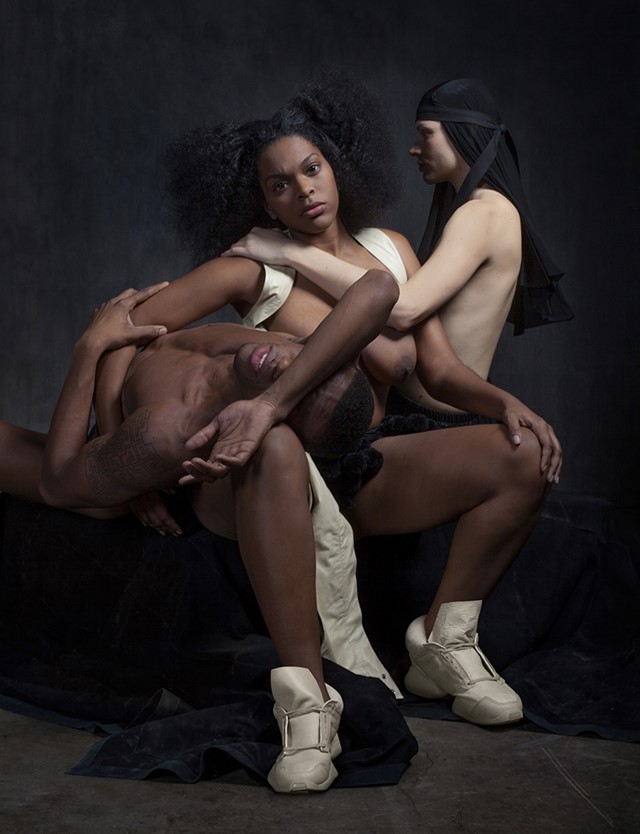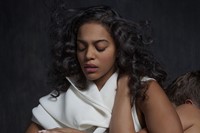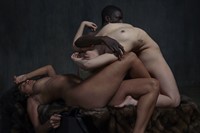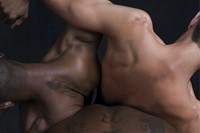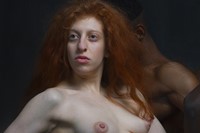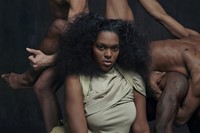Lifelong friends and collaborators Matthew Stone and Katie Shillingford discuss the extraordinary Rick Owens story they created for AnOther Magazine S/S14
For all the hyperbole written each season, it is rare for the impact of a fashion show to reverberate long after the clothes have been packed away and the dust has settled. But Rick Owens’ S/S14 show – an intoxicating swirl of urban energy that tipped all preconceived notions of what defined “high fashion” on their heads – left every witness breathless, and set the course for AnOther Magazine’s S/S14 fashion feature. “I left the venue feeling exhilarated and euphoric,” says AnOther’s fashion director Katie Shillingford. “I was genuinely moved and I wanted to applaud this fearless move and celebrate women of all colours and sizes.”
Fast-forward six months, and the new issue of AnOther is out, featuring an extraordinarily beautiful and unconventional story shot by Shillingford’s longtime friend and collaborator Matthew Stone, to accompany Susannah Frankel’s insightful investigation into the world of Rick Owens. Here, we present some exclusive images from the shoot, while the photographer and stylist discuss nudity, their own shared history, and what represents fearlessness to them.
What inspired the shoot's aesthetics?
Matthew Stone: The starting point was a series of group nude photographic artworks that I worked on in 2008. The series is both simple and complex. The set and environment are both painted black to pull focus to the bodies and their entangled configurations. At the time I thought of them almost as abstracts. I thought of the body as a manipulatable gesture, much like an expressive brushstroke within a sculptural frame. It's always interesting to me to return to the body used in this way. It seems that there are limitless combinations and forms that can be made. When I first started making these types of images I felt like the nudity was not sexual. In a way my feelings have changed now. I think of them of images that have the potential to be erotic, but that function in a different way to the sexual imagery that dominates advertising and pornography. They still discuss power and hierarchy but not in a way that glorifies violence or traditional social hierarchies. For that reason it felt like a relevant project to approach again for this project. I want to create a space for powerful and visceral exploration of the naked body that is both empowering and positive.
Katie Shillingford: I wanted us to shoot images that were somehow as bold and powerful as the show was or at least pay tribute to it. The show was towards the beginning of Paris Fashion Week so it was starting off on a high. I left the venue feeling exhilarated and euphoric, I was genuinely moved and excited that I'd had the pleasure to attend. I think it was very admirable that a designer with such a big brand, who is commercially successful too, had made such a brave choice. There is not enough of that in the fashion industry today, no one is brave enough to take a risk because everyone is worried about selling clothes. Of course selling clothes is the whole point but I do think we've lost the sense of 'show' and that is a real shame. I wanted to applaud this fearless move and celebrate women of all colours and sizes. That's also why I wanted to show a lot of nudity, because for me it wasn't just about clothes, it was about a really powerful message and putting that into print form.
"I wanted to show a lot of nudity, because for me it wasn't just about clothes, it was about a really powerful message and putting that into print form" — Katie Shillingford
What does Rick Owens' work represent to you?
MS: I like collaborating with designers who have a creative vision that extends beyond just the clothes. Rick is an artist in that sense. He has built his own world and he finds various forms for its expression. There was a real fearlessness and sophisticated power to the Spring/Summer 2014 show, with the steppers, that moved me emotionally and intellectually. On the one hand it was positive, progressive and blew so many ugly and bourgeois constructs out of the water, but on the other it was still powerful and aspirational. There is a tendency, particularly within fashion, to associate progressive politics with a shutting down of fun or glamour. This show was proof that it is still possible to make potent political statements within an industry that is so often politically compromised and a part of the everyday problems that surround us.
KS: Cult.
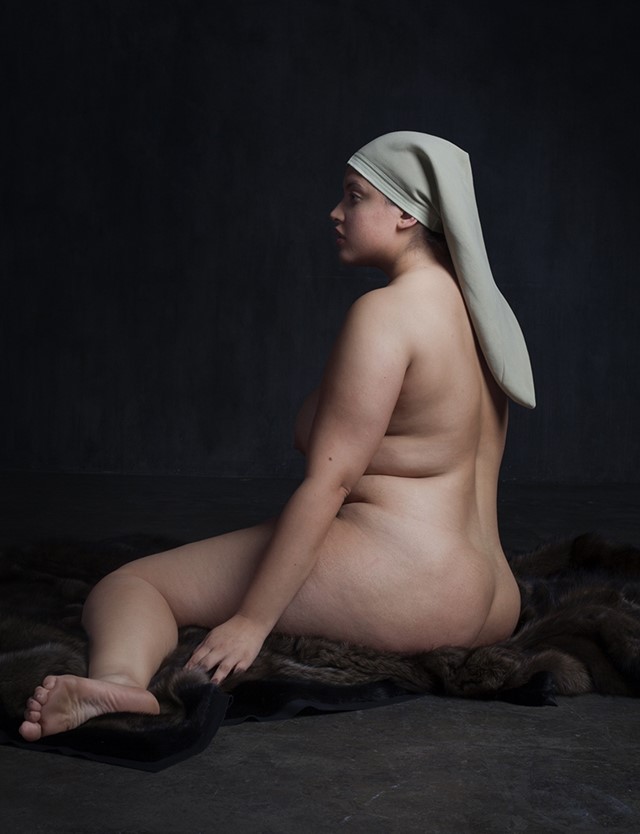
How and why did you cast the models you chose?
MS: We wanted to respond to the show’s casting and acknowledge the different implications that it created. I initially recognised the idea of race being central, but Katie made me think about the show as a statement for all women as well. So I discussed our approach with a lot of my female friends. We worked with the casting director Noah Shelley to find a mix of street-cast models, friends of friends in New York and professional plus-size models. It was important for us to collaborate with women who are less visible in mainstream fashion imagery to reflect the impact of the show. That said I was conscious to try and avoid patronising gestures. It did not feel like a compromise to work with any of the models we chose and I feel like we were lucky to find such inspiring and beautiful women in the process of it. We just wanted to make beautiful images of powerful women. In this context, it didn’t feel like this would be possible in an authentic way if we had only used professional models. I am aware that when a man is shooting female nudes there is an question to be asked regarding the objectification of women. Personally I think that there is space for positive and empowering nude imagery of women and this shoot represents a sincere effort to explore that potential.
KS: For me it was important the models we chose were different shapes, sizes and colours – all representing beauty in different physical forms. As we wanted to show a lot of skin within the story, the casting was the most integral part. The show was aggressive and fearless but I wanted to do something that had the attitude but that was also beautiful and showed a softer side of women. Matthew was the only photographer I could really picture shooting it and his work popped into my head as soon as we talked about the feature.
"I think that there is space for positive and empowering nude imagery of women and this shoot represents a sincere effort to explore that potential" — Matthew Stone
What best represents the fearlessness of youth to you?
MS: Some of the most fearless people I know are women in their seventies. The fearlessness of youth is much more common. When we are young, possibility is much easier to identify and less risky to connect to. Increasing responsibility throughout our lives limits the decisions we make as adults. Ultimately fearlessness relies on risk taking and as adults the risks we take have more impact on the people we love, so we become more careful. So for most people these types of actions often slowly shut down throughout their lives. As I said before, some people remain fearless their entire lives. This is the fearlessness I honour and love the most.
KS: Watching my 16-month-old daughter dive off a table head first is a great example! But I don't think you need to be so young to be so brave, perhaps to be physically fearless, but mentally I think you get more fearless as you gain experience and grow. My mother is one of the most fearless people I know and she's in her 70s.
What's your favourite memory of your adolescence?
MS: I remember the adrenalin and increased sense of possibility most fondly. It's not something that has dissipated entirely but there was a certain euphoric charge that permeated the things I was doing in my early twenties. Breaking into large commercial property to set up art squats, running exhibitions and parties for two thousand people, felt pretty wild. When I was a child, I felt like an adult and dreamt of being able to design the way that I lived and loved. In a way I feel like I was born an adult and will therefore remain a child for my entire life.
KS: None of my memories of adolescence are favourites – they are all angst-ridden! Dyeing my hair red like Angela Chase (Claire Danes) in My So Called Life to hide the tiger stripes caused by a bad DIY highlighting job. Completely taking it too far with a costume for Halloween when all of the other girls didn't really dress up and feeling mortified when we met a group of boys in McDonalds. I still feel sick when I think about that.
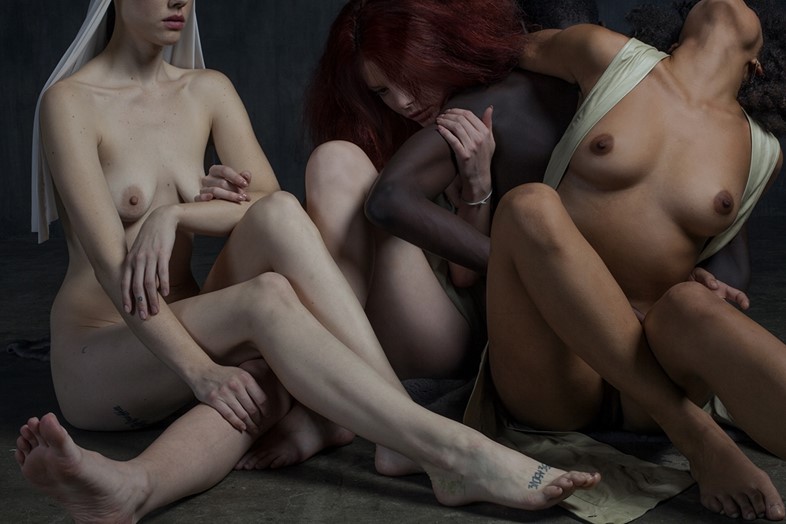
You have known each other for a really such a long time, growing up together in many ways. How does this come out in your working relationship?
MS: We have a shared history at a key point within both of our creative development. In 2004, Katie and I lived in a squatted 7000 square foot, four-floor Art Deco department store in Peckham and spent a lot of time dressing up to go out and producing culture that didn't really have an audience in mind. We worked on a fashion story that had some of that chaos in it recently and afterwards we questioned the mayhem of the work-flow. Working on a shoot like this for AnOther gave us a more measured work space, but I think in hindsight the crazy Dazed shoot was an amazing way to reconnect to our old way of working and allowed us to express some of the naive playfulness and the disregard we had for careerism.
KS: It's quite stressful! We went to college together; we lived together; Matthew conducted the marriage ceremony between my husband and I... I think that puts a lot of extra pressure on when you work together! But, when it came to the actual shoot day, it went very well. I wanted it to be extra special because we have that relationship, I think there's more at stake, but at the same time the advantage is we can be very honest with each other. It wasn't a big styling moment, but I often think the things that are stripped back can be more complex.
What's your favourite memory of each other from when you first met?
MS: There are probably lots that Katie wouldn’t let me repeat! But I have recently been re-editing a film we made during a week-long performance in Berlin in 2003. Katie, Gareth Pugh, Hanna Hanra, Adham Faramawy and I spent hours in a youth hostel getting ready and doing each other's make-up only to go out into the street and be routinely ignored by passers by.
KS: Making outfits out of yellow and black plastic Netto bags and doing performance art/rolling around the floor of nightclubs.
See the full story in the latest issue of AnOther Magazine, out now.
